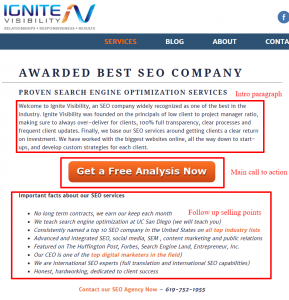
With more and more companies implementing ABM and heralding their successes—everything from increased revenue and more significant deals to increased customer retention rates—it’s only natural to want to join the party. After all, according to ITSMA, 87% of B2B marketers report higher ROI using ABM strategies.
That said, implementing ABM is not without its challenges. This should not frighten you off, but rather help you move forward with your open eyes, prepared to devote the time and resources needed to succeed.
So fasten your seatbelt, and let’s explore a few of the potential bumps along the road to ABM’s success and how to avoid them.
Failure #1: Lack of Top-Down Support
In an era of increasing reliance on marketing automation and AI-based sales tools, it’s natural to think that implementing ABM is just a matter of investing in the right technology. This may be the number one misconception about ABM.
Your ABM initiative needs a well-placed champion—ideally one or more advocates in the c-suite. It’s the only way you can achieve the level of goal alignment, teamwork, commitment and budgetary support necessary to succeed.
When it comes to ABM, ownership must come from the top.
Failure #2: Lack of Customer Insight
The key to ABM is to identify companies most likely to benefit from the products and services you sell and, therefore, will have the highest propensity to buy.
Identifying those companies requires a deep understanding of your best customers. You need to identify patterns in the demographic, technographic, firmographic and engagement data that will enable you to build an ideal customer profile.
This is not a superficial exercise. It takes more insight than identifying the companies that resulted in the most significant deals. You want to look at the lifetime value of customers. Which companies have enjoyed the most success from working with you? Which companies have stayed with you the longest?
Failure #3: Not Having the Collateral Needed to be Effective
ABM is all about identifying and engaging with multiple people from an organization that are involved in the decision process to purchase a new solution or product. These contacts may be direct decision-makers, financial decision-makers, technical decision-makers, influencers, end-users, etc.
The message each person receives needs to be customized to their role. If they are a technical person, the messaging may be about functionality. If they are more finance driven, they may be interested to see cost-saving benefits. If it’s an end-user or influencer, they may be more interested in the ease of use or performance benefits. And of course, if the ABM is to be rolled out to different countries, you want to have everything in the local language and to use local references.
Failure #4: Missing the Signals of Intent and Readiness
As critical as an insightful customer profile will be to your ABM success, you also need to be able to read the signals that may trigger a prospect to buy or be receptive to your message.
Signals are the changes, events and activities that suggest a company can benefit from the products and services you offer. Growth, for example, is a signal. Maybe a company is doubling its salesforce, expanding internationally, adding more domestic offices, or increasing its manufacturing capabilities.
Changes in top management, recent acquisitions, new product launches, or IPO announcements are all signals that could lead to potential buyer interest. Your challenge is to know which signs you need to watch. Again, having insight into your best customers and any changes that may have opened the door to your sales advances is invaluable.
Failure #5: Lack of Marketing and Sales Alignment
For far too long, sales and marketing (if not actually at odds) have worked independently. They have separate agendas: marketing to bring in as many leads as possible and sales to close big deals.
ABM is most effective when sales and marketing align their goals and work as a team to focus on attracting and selling companies that match the ideal customer profile. One of the best ways to get started is to build a small ABM team comprised of sales reps, marketers, product specialists, sales/marketing operations and, ideally, a leader that can communicate across departments.
Build a campaign that aligns messaging, social media and content development with the target market to which the reps are focused on selling.
We cannot stress enough the importance of this enough, so take the time to get sales and marketing alignment right, and it will pay off in spades.
Failure #6: Starting Too Big
Given ABM’s potential for delivering bigger deals and increased revenue, companies are often tempted to go all-in on ABM. But if you have a current sales strategy that’s working… if your lead generation and qualification are delivering good prospects, don’t abandon these efforts.
Introduce ABM gradually. Get your feet wet by running a small ABM program in tandem with your other sales and marketing efforts. Build an ideal customer profile around one particularly strong market. Create an ABM team to focus on that market and learn the ropes.
The successes and setbacks that your initial team experiences will be invaluable to growing your ABM strategy. Taking baby steps now will empower future leaps.
Failure #7: Too Little Tracking and Measurement
While many B2B companies can benefit from ABM, it’s not a cure-all. In fact, if you have a strong salesforce, revenues are rising, marketing is supporting sales and your pipeline is full—and you’re not currently using ABM—maybe you should leave well enough alone.
Or at least you should tread lightly and track the heck out of your initial ABM effort. Ultimately, the only way to know if ABM is right for you is to understand how it performs compared with what you’re doing now. After all, this is the mark of a good marketer.
The challenge comes when you’re not sure how to track and measure ABM progress. Some of the benchmarks you might measure in a small test include:
- Engagement: Are target accounts spending more time engaging with you and your content?
- Size of deals: Are you closing larger deals?
- Buyer’s journey: Are new customers reporting a better, more informed buying experience?
- Onboarding: Are new customers more receptive and better prepared to get started?
- Upselling: Are you able to work accounts deeper and more broadly to sell more products across a company?
ABM offers the potential to help companies identify and focus their sales and marketing efforts on prospects most likely to buy. It’s why so many surveys and studies are reporting dramatic revenue growth using ABM.
That said, it’s essential to know the potential pitfalls going in. For many B2B companies, the upside of ABM is too significant to risk failure due to inadequate preparation. Start small. Build a diverse team. Identify your ideal customer. And track your results.
Business & Finance Articles on Business 2 Community
(106)
Report Post







